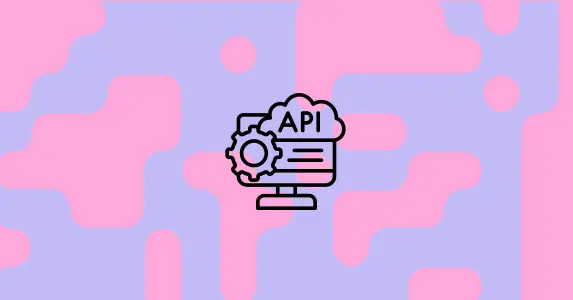You’re browsing your favorite fashion site, eyeing a sleek satin dress for your next night out. Just as you’re about to hit “Add to Cart”, boom. A recommendation pops up… for a rugged backpack. Not a chic tote that completes your look, just something completely off. It’s jarring, isn’t it?
That one off-beat suggestion doesn’t just interrupt your shopping flow; it cracks the emotional bond, erodes trust, and quietly chips away at the credibility of the brand. Now imagine that happening across millions of browsing sessions. You begin to see the unseen damage: wasted impressions, reduced conversions, inflated marketing spend, and over time, it becomes a business liability.
In 2026, bad personalization isn’t just a minor nuisance; it’s a silent drain on your P&L. The good news? You don’t need to rip up your legacy tech stack or hire an army of engineers to get started. What you do need is a personalization engine that’s contextually aware, shopper-centric, and capable of evolving in real time. That’s where a platform like Netcore steps in, built to deliver intelligent, consumer-centric personalization at scale.
But before we talk solutions, let’s unpack the real scope of the problem, because you can’t fix what you don’t understand.
The Real Cost of Getting Personalization Wrong
Marketers love to talk about “personalization” as the secret weapon. But when your systems get it wrong, the cost is real and mounting.
Let’s look at what the data from 2025 and industry research tells us:
- 71% of consumers expect companies to deliver personalized interactions, and 76% say they get frustrated when they don’t.
- Companies that execute advanced personalization effectively can experience revenue uplifts of 5–15% (and in some cases, up to 25%) along with marketing spend efficiencies of 10–30%.
- Yet, many brands are still lagging: only about 35% of businesses offer truly omnichannel personalized experiences across all touchpoints.
- From the consumer side: 61% say they’re often treated like “numbers” rather than individuals. 81% ignore irrelevant marketing entirely.
- And importantly for retention, in 2025, retention is being rebuilt around personalization, with the quality of the experience becoming the retention engine, not just discounts.
Put all that together, and you see the hidden costs:
- Wasted acquisition spend, when you serve offers/recs that don’t match shopper intent, you pay for traffic that doesn’t convert.
- Brand erosion, irrelevant, impersonal experiences, gradually undermine trust and loyalty.
- Lost lifetime value, when shoppers don’t feel “seen”, they are less likely to return, less likely to spend more.
- Operational drag, in fragmented systems, every mismatch, mis-triggered offer, or inconsistent message costs time, resource, and opportunity.
In short, bad personalization isn’t just “missed clicks”, it’s missed relationships, missed revenue, and missed future growth.
Why Traditional Personalization Engines Are Failing
If you’ve ever felt like your “personalized” experience still doesn’t feel personal, you’re not crazy. Traditional recommendation engines are built on outdated assumptions: coarse segmentation, rigid rules, and fragmented data. And that’s where things break down.
Here’s how the failure happens, step by step:
- Data is incomplete or siloed: Rules-based systems often only use clicks or last purchase type behaviour, not the “why” behind them.
- Journeys are fragmented: Web, app, email, and even physical store behaviours carry different data traps; without a unified view, the recommendations feel inconsistent.
- Context is missing: Traditional systems might know “bought a skincare product”, but miss that the shopper is now in a mood for “clean/green beauty” or cares about “sensitive skin”.
- Scale means sameness: Many tools can only scale “if X then Y” logic, so they push broad segments, oversimplifying or worse, over-personalizing in ways that feel creepy or mismatch the moment.
- The wrong kind of personalization is worse than none: Because it breaks trust. When recommendations feel off, disconnected, or tone-deaf—they don’t just fail to convert, they drive churn.
The result? Browsers bounce, carts are abandoned, marketing ROI falls. For 2026, in a climate of tighter budgets and higher customer expectations, this is material.
How You Can Fix It: The Smart Path to Personalization That Works
There’s no silver bullet, but there is a smarter path, one that blends human understanding, real-time signals, and automated scaling. Here are the shifts you need to make. And yes, platforms like Netcore are built to support this shift.
1. Unify Across Channels for Consistency
The recommendation on your homepage, the email campaign, the app push, and any in-store experience should feel coherent. If a shopper gets one message on email and a completely different one on site, it breaks the narrative and flattens the experience. Seamlessness matters. And data shows that only a minority of brands currently deliver across all channels.
2. Make Real-Time Behavior Your Ally
Static “last-purchase” logic just doesn’t cut it anymore. Use triggers: did a shopper linger on a product page but bounce? Did they add to the cart but leave? Did they visit a competitor’s page via referral? Use those signals to adapt your recommendation logic and messaging on the fly.
As McKinsey & Company points out, the companies seeing real value are those that embed personalization into workflows and can respond in real time, not just batch segmentation. (McKinsey & Company)
3. Be Transparent, Build Trust, Respect Privacy
Customers are willing to share data, but only if done respectfully. According to one 2025 study, 77% of shoppers say they’d trust a brand more if it explained how it uses personal data. And when personalization misses the privacy/consent and transparency step, for example, recommendations that feel invasive, it becomes a retention risk.
4. Measure Beyond Clicks: Track Lifetime Value, Retention & Trust
If you evaluate personalization only by the number of clicks or immediate conversions, you’ll miss the broader value. The metric gap is often bigger in retention, repeat purchase, and lifetime value. Research shows that personalization drives these long-term gains when done right.
Why 2026 Is the Critical Moment
Going into 2026, the gap between “good enough” personalization and “great” personalization is widening. Consumers expect more, and companies that can’t keep up risk being seen as irrelevant. According to analysts, the brands that will thrive are those that “create unique and memorable experiences” rather than just matching the baseline expectation.
At the same time, budgets are under pressure and the cost of acquisition is rising, so the hidden cost of bad personalization isn’t hypothetical. It’s a financial drag.
Every irrelevant suggestion, every misplaced email or recommendation carousel that misses the mark, that’s a stolen opportunity. But the flip side is: every right recommendation builds trust, loyalty, and incremental revenue.
The Practical Step-by-Step Fix
Here’s a simple roadmap you can follow:
- Audit your current state: How many channels do you personalise across? What’s the % of customers who actually see individualized recommendations?
- Segment your signals: Move beyond static segments. Define key shopper affinities, intent moments, and real-time triggers.
- Unify your data and events: Bring web, app, email, and offline behaviour into one view (or single-pane platform).
- Pilot quick-win use-cases: Eg – when a product page has high dwell time + no conversion, trigger “similar items”, “complementary items”, or a tailored email. Measure uplift.
- Scale the experience: Use AI/ML to automate recommendation logic, but always embed human oversight to ensure relevance, authenticity, and appropriateness (i.e., avoid over-personalization that feels creepy).
- Monitor metrics beyond ROI: Retention rate, repeat purchase frequency, Net Promoter Score, and customer sentiment around personalization.
- Govern & secure the experience: Transparent data usage, opt-in preferences, preferences management, and contextual triggers, not just personalization for personalization’s sake but with trust built in.
Conclusion
In 2026, bad personalization isn’t just a missed click — it’s a brand moment lost, a shopper disengaged, and a future possibility forfeited. The good news? You don’t need to start from scratch. You just need to rethink how you segment, trigger, unify, and measure.
The brands that will win aren’t the loudest, they’re the ones who listen best. They anticipate, support, and adapt to their shoppers’ moment-in-time needs. They build trust at the same time they deliver relevance.
If you’re ready to shift from personalization as a checkbox to personalization as a connection, Netcore Cloud can help you make that leap. With AI-powered personalization, predictive intent modeling, and unified customer intelligence, Netcore helps brands create experiences that feel human, at every touchpoint.
Because when your personalization feels right, your customers feel recognized.
And when they feel recognized, they stay.
👉Ready to make personalization your competitive edge in 2026?
 2 YRS IN A ROW
2 YRS IN A ROW  Netcore Named a Leader in 2025 Gartner® Magic Quadrant™ for Search & Product Discovery
Netcore Named a Leader in 2025 Gartner® Magic Quadrant™ for Search & Product Discovery 










